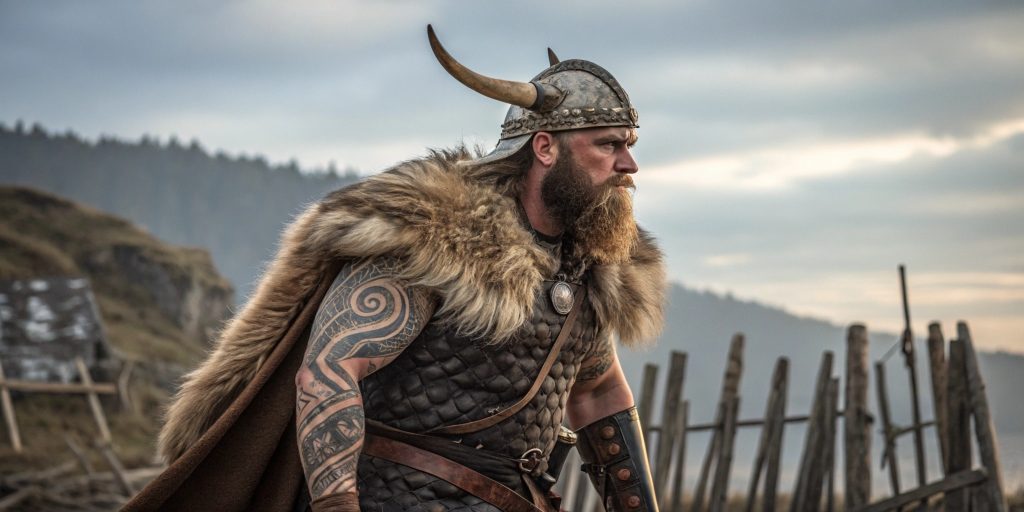Viking Heritage, Vikings
Did Vikings Have High Testosterone?
Viking warriors have fascinated people for centuries. They were known for their strength and bravery. But did they have high testosterone levels, or were they experiencing symptoms of low testosterone?
Exploring Viking testosterone helps us understand their physical strength. It also shows how their hormone levels might have made them fierce warriors, paralleling the effects of testosterone replacement therapy in modern times.
This article examines how Viking testosterone levels affected their health and how this relates to modern society. By studying Viking masculinity, we learn more about their lifestyle and how it shaped them.
The Mythos and Viking Physical Characteristics
Viking culture was all about strength, courage, and toughness. The people loved war and exploration and had a strict social order, which made them see being strong as the key to being a true Viking warrior.
Understanding Viking Culture
Vikings lived by a code of honor and bravery. Their culture included:
- Viking sagas that told stories of heroism.
- Training in weapons and combat.
- Feasts where strength was celebrated.
Being strong was not just for show. It was crucial for belonging in their society. Vikings valued physical and mental strength highly.
Imposing Physical Traits of Vikings
Vikings were known for their physical traits. Archaeology shows they were:
- Taller than average, at 5’7″ to 6′.
- Strong and muscular from hard work.
- Had strong bones for fighting.
These average Viking traits showed their active lives and warrior culture, which may have contributed to their libido and overall vitality. Thanks to their aggressive lifestyle, they were seen as strong and masculine.
Viking Testosterone: Fact or Fiction?
The debate about Viking testosterone levels mixes history with myth. Stories of strong warriors shape our view of Vikings. People think these warriors had high testosterone, asking if it’s true.
Old texts show a mix of professional opinions on Viking health and hormone levels. Sagas tell of heroes doing amazing things. But, these stories might not show real testosterone levels. Diet, lifestyle, and society also affect Viking testosterone, making it hard to say all stories are true.
Today, some stories make the myth or fact debate worse. They compare Vikings to today’s ideas of being strong, making it hard to see the real Viking culture and identity.
We must examine history and science closely to distinguish fact from fiction about Viking testosterone. While some things seem believable, we must understand the whole picture. This helps us see how Viking testosterone fits into myths about being a man.
Analyzing Historical Data on Viking Hormone Levels
Looking into average Viking hormone levels mixes old history with new science. This mix gives us cool facts about Viking testosterone. It shows how both old findings and new studies help us understand this topic well, ensuring a comprehensive view of Viking health.

Available Historical Evidence
Excavations in Viking places have given us clues about testosterone levels back then. Some key points are:
- Skeletal remains tell us about physical strength and health.
- Tools and weapons show what jobs people had and how hard they worked.
- Old writings like sagas give us a peek into Viking life and struggles.
These pieces help us guess Viking testosterone levels. But we must be careful with our guesses.
Modern Scientific Studies
Today’s research has made us better understand hormone levels in Viking-like groups. Important findings include:
- Studies compare Scandinavian men’s testosterone today with Viking times, using lab results to understand the differences in hormone levels.
- Health checks on today’s people might show Viking Age patterns in hormone levels similar to those found in a clinic.
- How the environment affects hormone levels in different groups can help ensure accurate assessments of their health.
These studies help us see how Viking testosterone might have shaped Viking society. They connect the past with today, giving us a clearer picture of how testosterone impacts historical and modern bodies.
The Role of Testosterone in Viking Society
Testosterone was key to the Vikings’ strength. It helped them be tough and last long in battles and daily tasks. Knowing how testosterone helped them reveals their skills and how they lived together.
Testosterone’s Impact on Strength and Endurance
Many studies show that testosterone is linked to strength and longevity. More testosterone means bigger muscles, more strength, and better endurance. For Viking warriors, these were must-haves for their hard work, such as fighting, sailing, and hard labor.
This extra strength might have made them stand out. It could have helped them be the best sailors and fighters around.
How Social Structures Influenced Testosterone Levels
Viking society was complex, with a strict order and a warrior culture. The social setup was key in deciding who was important and how much testosterone they had. Warriors competing for status and rank might have had more testosterone.
This focus on being warriors likely helped them produce more testosterone. It was also good for their lifestyle and the competition they faced.
Viking Health and Well-Being

To understand Viking health, we must examine their common health issues and consider how their lifestyle affected their well-being. Heart disease and breathing problems were common and linked to diet, environment, and stress.
These factors and the Vikings’ demanding lives likely affected their hormone levels, including testosterone, which is key for health and energy.
Common Health Issues Among Vikings
Thanks to our modern understanding of medicine, Vikings faced many health problems. Arthritis and heart disease were common, caused by hard work, poor care, and bad diet. These issues hurt their quality of life and might have changed their hormone levels, like testosterone.
The Impact of Lifestyle on Hormone Levels
The Vikings’ lifestyle was tough, with lots of physical activity, certain diets, and stress. Eating lean proteins, whole grains, and veggies might have helped their testosterone levels, possibly enhancing their libido. But, living in harsh conditions and fighting wars could have stressed them out, lowering these hormones.
This study of Viking health shows how lifestyle and environment affect us. It’s a lesson for today’s health discussions.

